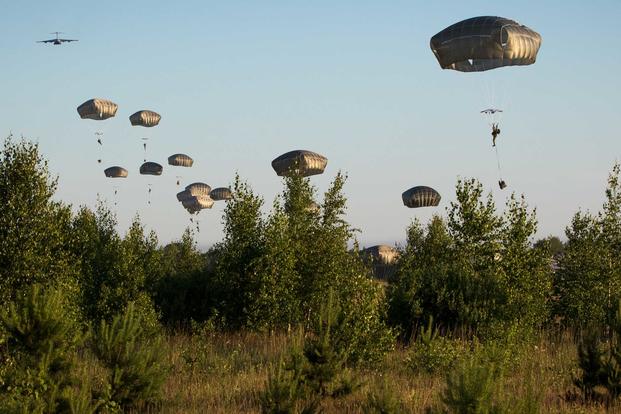European citizens will see thousands of U.S. and allied troops rolling through or landing in 10 different countries over the course of a few weeks next spring. Thousands of pieces of military equipment, some 20,000 U.S. Army troops and 17,000 allied troops will train to how forces can coordinate with speed through European terrain during a fight.
The exercise, known as DEFENDER-Europe 20, will be the largest deployment of U.S. land forces in the last 25 years, officials said. The Army's goal is to push troops to the maximum extent possible to make the drill worthwhile, testing their agility and interoperability skills for a future fight, according to officials at the annual Association of the U.S. Army Annual Meeting and Exposition in Washington, D.C.
"We've been doing the small brigade size of rotational deployments to theater a number of years, but we haven't been able to do it at scale for a division-sized force," Col. Joe Scrocca, director of public affairs for U.S. Army Europe, told reporters. "I think that's the primary thing that you're going to see that is going to max out our partner's capabilities, especially in the infrastructure."
Troops will operate out of Belgium, Czech Republic, Estonia, Georgia, Germany, Italy, Latvia, Lithuania, the Netherlands and Poland between April and May 2020, according to a recent Army announcement.
Related: Air Force Want to Make its Moves More Stealthy by Hiding in Plain Sight
Units participating include an Army division headquarters, three armored brigade combat teams, a fires brigade, a sustainment brigade. Air Force and Marine Corps assets and 18 partner or allied nations, will also participate, the Army said Oct. 7.
Scrocca said members of the 82nd Airborne Division will also conduct five joint forcible entry operations, "jumping into Georgia, Poland and Lithuania."
Equipment will begin trickling in in February, the last of it out by August. To better prepare, the Army will test different ports of entry such as Latvia and Greece prior to DEFENDER-20 to analyze various transportation channels, Scrocca said.
"Every time we do a rotation, we test different ports in different routes so that we can understand all the different procedures for the different route," he said. He added that every country had its own rules about moving military equipment across borders to avoid spreading invasive species or disease, and thus those moves had to be carefully coordinated.
The Army hopes to make DEFENDER-20 as effective a training exercise as last year's Trident Juncture. The joint exercise brought nearly 50,000 U.S. and NATO forces together in the Arctic for the largest iteration of the drill since 1991.
"What's different here is, we're bringing all this equipment in," Scrocca said when comparing the two. "We're bringing 20,000 forces from the United States. We didn't do that for Trident Juncture, definitely not at that [scale]," he said.
Trident Juncture involved roughly 14,000 U.S. troops.
"While there's a lot of attention paid to Russia...and China, in Europe, we don't know when the next threat will be," Scrocca said. "So U.S. Army Europe will maintain a 360-degree focus; we've got to be ready to respond to any threat, we have to be agile and we have to be speedy and that's what this exercise is going to do."
-- Oriana Pawlyk can be reached at oriana.pawlyk@military.com. Follow her on Twitter at @Oriana0214.
Read more: Air Forces Europe General: Time to Rethink the Way Troops Train with US Allies












